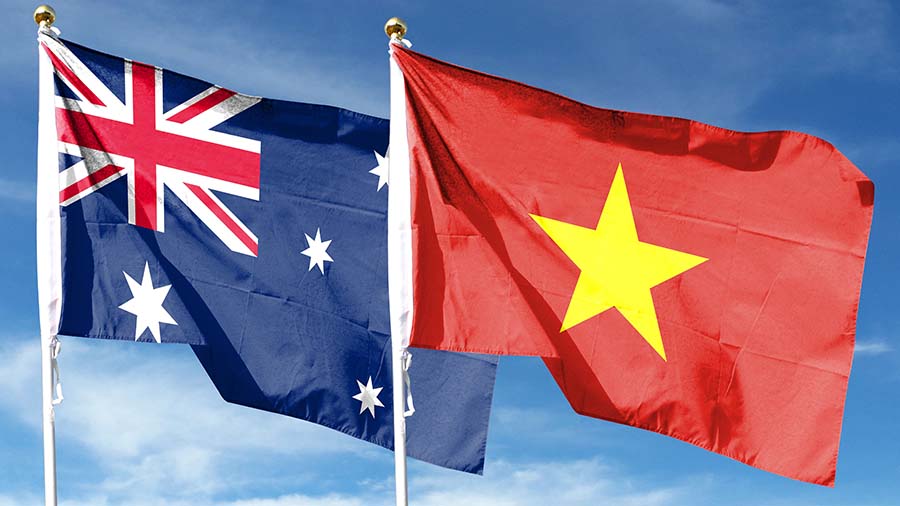Valued-added Tax in Vietnam: Filing, Payment and Refund
Oct. 1 – Pursuant to the prevailing regulation on Vietnamese tax management, the taxpayer must submit monthly valued-added tax (VAT) returns and settle tax payments on or before the 20th day of the following month in localities where they conduct production or business. Furthermore, in specific situations, business establishments that pay VAT according to the credit method are entitled to a tax refund. This article will examine the filing, payment and refund of VAT in Vietnam.
 RELATED: Dezan Shira & Associates’ International Tax Planning Services
RELATED: Dezan Shira & Associates’ International Tax Planning Services
Tax Filing and Payment
For companies adopting the direct method of VAT calculation, the tax finalization must be made no later than the 90th day from the end of calendar year. Payment has to be made in Vietnamese dong (VND) directly to the State Treasury in cash or through the taxpayer’s bank account.
Taxpayers that declare and pay VAT using the credit method, and have dependant accounting production establishments (including processing and assembling establishments) located in provinces or cities other than the locality where they are headquartered, shall pay VAT both in localities where their production establishments are based and where they are headquartered.
Dependent accounting production establishments that conduct cost-accounting activities following the Vietnam Accounting Standard should register for tax payment using the credit method in localities where they conduct production activities. They should use value-added invoices as a basis for tax declaration and payments in these localities when delivering their semi-finished or finished products to other establishments, including their headquarters.
If dependant accounting production establishments fail to conduct cost-accounting activities, taxpayers at headquarters should pay 2 percent VAT (for goods subject to the VAT rate of 10 percent) or 1 percent VAT (for goods subject to the VAT rate of 5 percent) of the VAT-exclusive turnover of products they produce in the city or province where they are located. VAT amounts already paid by taxpayers for their dependent accounting production establishments will be deducted against their payable VAT amounts in localities where they are headquartered.
Tax Refund
As previously mentioned, business establishments using the credit method of VAT calculation may be entitled to a tax refund in the following situations:
- They have input VAT amounts that have not yet been fully credited for three or more consecutive months;
- They have new investment projects and VAT amounts on purchased goods or services used for an investment of VND200 million or more that have not yet been fully credited;
- Upon ownership transformation, enterprise transformation, merger, consolidation, separation, split, dissolution, bankruptcy or operation termination, they have an overpaid VAT amount or input VAT amount that has not yet been fully credited; or
- Business establishments that export goods or services are entitled to VAT refunds on a monthly basis if they have a non-credited input VAT amount of VND200 million or more.
To obtain a tax refund, business establishments have to submit an application dossier to the tax authority in charge. Taxpayers who have properly observed tax law and have their transactions paid for via commercial banks or other credit institutions are eligible to obtain tax refunds before the authorities examine the application dossier. The tax authorities with jurisdiction over VAT refunds must approve the VAT refund within 15 days from the date of receipt of a complete file. For other taxpayers, dossiers should be examined before a tax refund is made. The time limit for resolution of a tax refund is 60 days from the date of receipt of a complete file.
In practice, the tax authorities tend to insist on offsetting the VAT refundable amount against other tax liabilities that the taxpayer may have in the future, rather than refunding the amount. Otherwise, in most cases, it usually takes two to six months from the date of submitting documents to the date of actually receiving the refund. In addition, VAT refunds often involve a tax audit to review the supporting documentation and invoices.
 Portions of this article was was taken from Vietnam Briefing’s Doing Business in Vietnam technical guide. This guide aims to assist foreign investors in understanding the business environment of Vietnam, including reasons to invest and the challenges for which to prepare for. This publication is available as a PDF download in the Asia Briefing Bookstore.
Portions of this article was was taken from Vietnam Briefing’s Doing Business in Vietnam technical guide. This guide aims to assist foreign investors in understanding the business environment of Vietnam, including reasons to invest and the challenges for which to prepare for. This publication is available as a PDF download in the Asia Briefing Bookstore.
Dezan Shira & Associates is a specialist foreign direct investment practice, providing corporate establishment, business advisory, tax advisory and compliance, accounting, payroll, due diligence and financial review services to multinationals investing in emerging Asia. Since its establishment in 1992, the firm has grown into one of Asia’s most versatile full-service consultancies with operational offices across China, Hong Kong, India, Singapore and Vietnam as well as liaison offices in Italy and the United States.
For further details or to contact the firm, please email vietnam@dezshira.com, visit www.dezshira.com, or download the company brochure.
You can stay up to date with the latest business and investment trends across Vietnam by subscribing to Asia Briefing’s complimentary update service featuring news, commentary, guides, and multimedia resources.
Related Reading
Calculating Value-added Tax in Vietnam
Vietnam Issues New VAT Regulations
How Foreign Contractors are Taxed in Vietnam
New Resolution to Postpone Payment of VAT and CIT
- Previous Article New Issue of Vietnam Briefing: Manufacturing in Vietnam to Sell to ASEAN and China
- Next Article Business License Tax in Vietnam
































